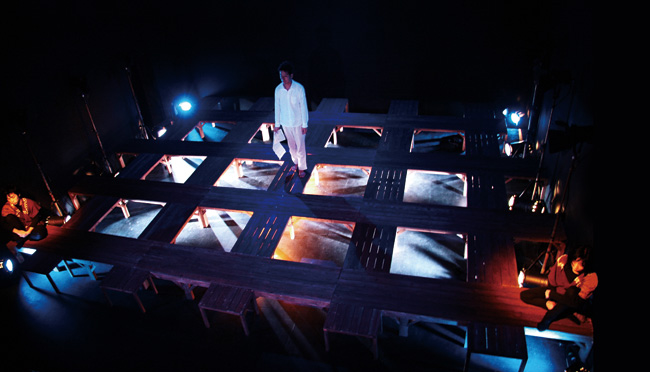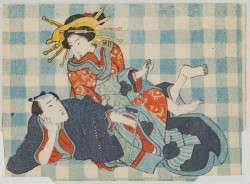
November 12, 2009
Theatre/University 09 Autumn
The student segment of Festival/Tokyo may prove the event’s most intriguing
By Metropolis
Originally published on metropolis.co.jp on November 2009

Courtesy of Festival/Tokyo
The byword of the ongoing Festival/Tokyo seems to be “exchange”: an exchange of ideas, of cultures and of artistry. The performance series attempts to open a dialog within contemporary theatre and dance, showcasing a range of events from homegrown talent to world premieres of international theater, including American director Chris Kondek’s Dead Cat Bounce.
Yet perhaps the most intriguing element of the F/T’s program is the somewhat austere sounding “Theatre/University 09 Autumn” series. Amid the foreign acts and more established Japanese repertoires, the festival has also provided room for an exchange between generations in the form of a special showcase of Japanese student theater.
The four participating institutions—Tama Art University; J.F. Oberlin University; Kyoto University of Art & Design and Kinki University—and their promising lineup of dance and drama-based performances will provide a unique look at the inner workings of Japan’s arts schools, whose faculties are largely responsible for rearing the country’s theatrical talent.
In some ways, the series represents theater at its most fundamental, offering an insight into the concerns of Japanese youth. For the students involved, it’s a rare opportunity to present work that has hitherto remained firmly within their respective university environments. If, as the F/T claims, “nowadays theater is born in the universities,” the festival provides vigor to a fragile and undervalued medium.
“It’s a pity that not so many young people go to theater—and it’s not only the younger generation,” says Tama University drama professor Toyomi Kano. “One factor is the high price of tickets. The Tokyo metropolitan area has about 220 theaters and performances are held everyday. It’s a city where theater is flourishing according to this figure. However, the current state is that theater culture isn’t yet rooted in [the Japanese] lifestyle.
Yuichi Kinoshita, a master’s student at Kyoto University and the director of Date Musume Koi no Higanoko, agrees on the need to broaden the theatergoing population. He explains that for members of his company, the F/T performance offers invaluable potential for artistic interaction. “Student productions tend to have a set audience base and become hermetic,” he says. Participation in the festival will present student theater to audiences largely unaware of its rapid development and also allow university troupes “to stimulate each other” by comparing each other’s activities.
Indeed, one of the F/T’s stated goals is to explore the social potential of theater. But each university performance has also been born out of the challenge of finding a personalized means of expression, which, in turn, has significant implications for the future of Japanese theater.
Kyoto University’s Kinoshita Kabuki, for instance, attempts to portray the multifaceted nature of traditional plays, through having modern theater actors perform a kabuki script in an attempt to rekindle the power of tradition. “When thinking of Japanese traditional forms of entertainment, they are borne from a different structure with values that vary from their modern counterpart,” Kinoshita says. “This difference itself reflects as something fresh to us, who live in the modern world, and may bring out new discoveries. Unfortunately, present interpretations and productions of Japanese traditional forms of entertainment have rigidified, thus it is rare to feel the ‘power’ of the tradition.”
Tama University students will explore the curious relationship between live theater and recorded media like photography and film, while Oberlin student-dancers will investigate themes of injury, recovery and—perhaps most aptly—development, through Kuniko Kisanuki’s offering Kasabuta. This beautifully choreographed piece, according to its creator, utilizes one of the most “introspective” of art forms.
In sum, Japan’s performing arts students seem well equipped to explore the tenets of this year’s Festival/Tokyo in terms of what is “real” regarding the concerns of “our generation.” Together, the four universities represent a meaningful inclusion in what in one brief year has become Japan’s most vibrant international theater event.
Festival/Tokyo 09 Autumn: Theatre/University 09 Autumn
Productions by the theater departments of some of Japan’s top arts universities. Dec 1-6, various times, ¥1,000. Tokyo Metropolitan Art Space & Theater Green, Ikebukuro. Tel: Arts Network Japan 03-5961-5202.







